Peperomia Obtusifolia: How To Grow The Baby Rubber Plant
If you want an easy-care, attractive, and fast-growing houseplant, look closer here. With its thick, glossy green leaves, the Baby Rubber Plant is just what you’ve been looking for. This is all about how to grow and care for a Peperomia obtusifolia.
I’ve already done a post and video on general Peperomia care (all six I’m growing are easy). Still, due to its popularity, I wanted to do one dedicated solely to this succulent-like beauty. I live in the Sonoran Desert in Tucson, and my two Peperomia obtusifolia plants thrive. If they can handle the dry climate here (where the humidity averages 25-29%), they can handle the dry air in your home.
Quite a few of my houseplants, especially my Dracaenas, have brown tips due to the dry air. My Baby Rubber Plants have no brown tips at all. How great is that?!
Botanical Name: Peperomia obtusifolia Common Name: Baby Rubber Plant, Pepper Face Plant, American Rubber Plant
Peperomia Obtusifolia Traits
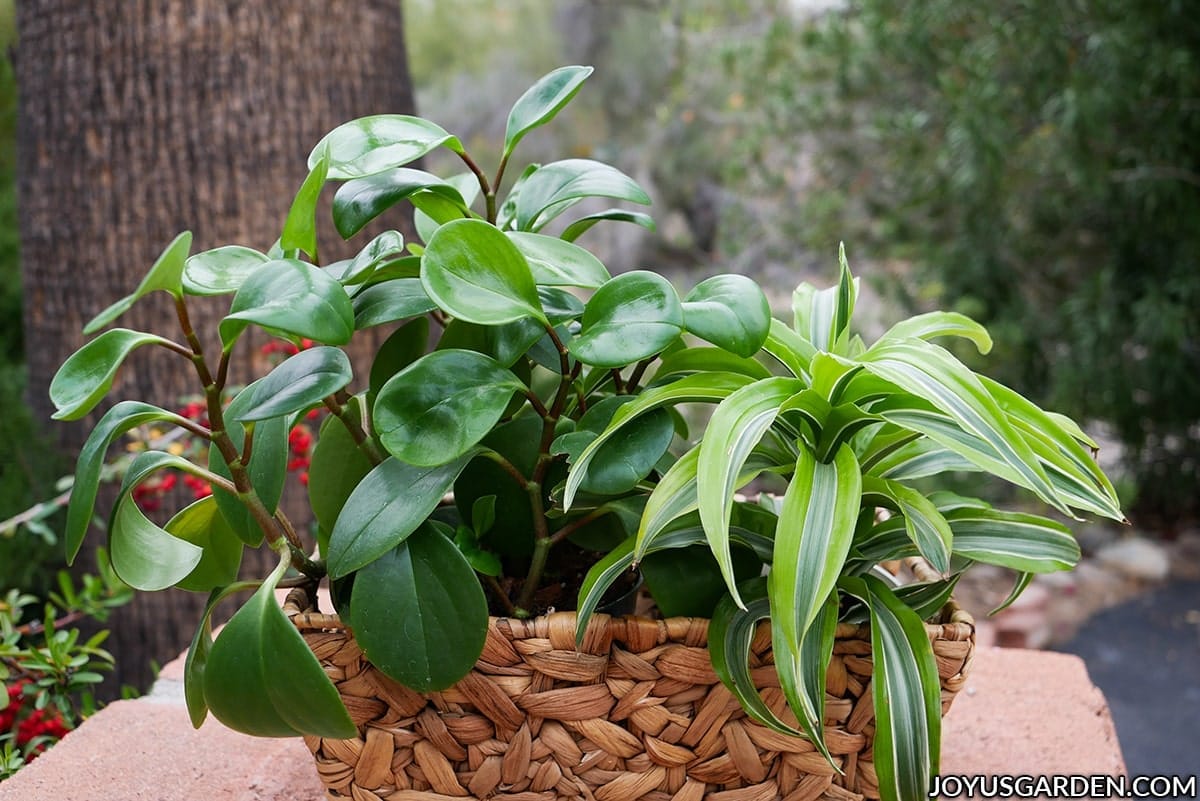
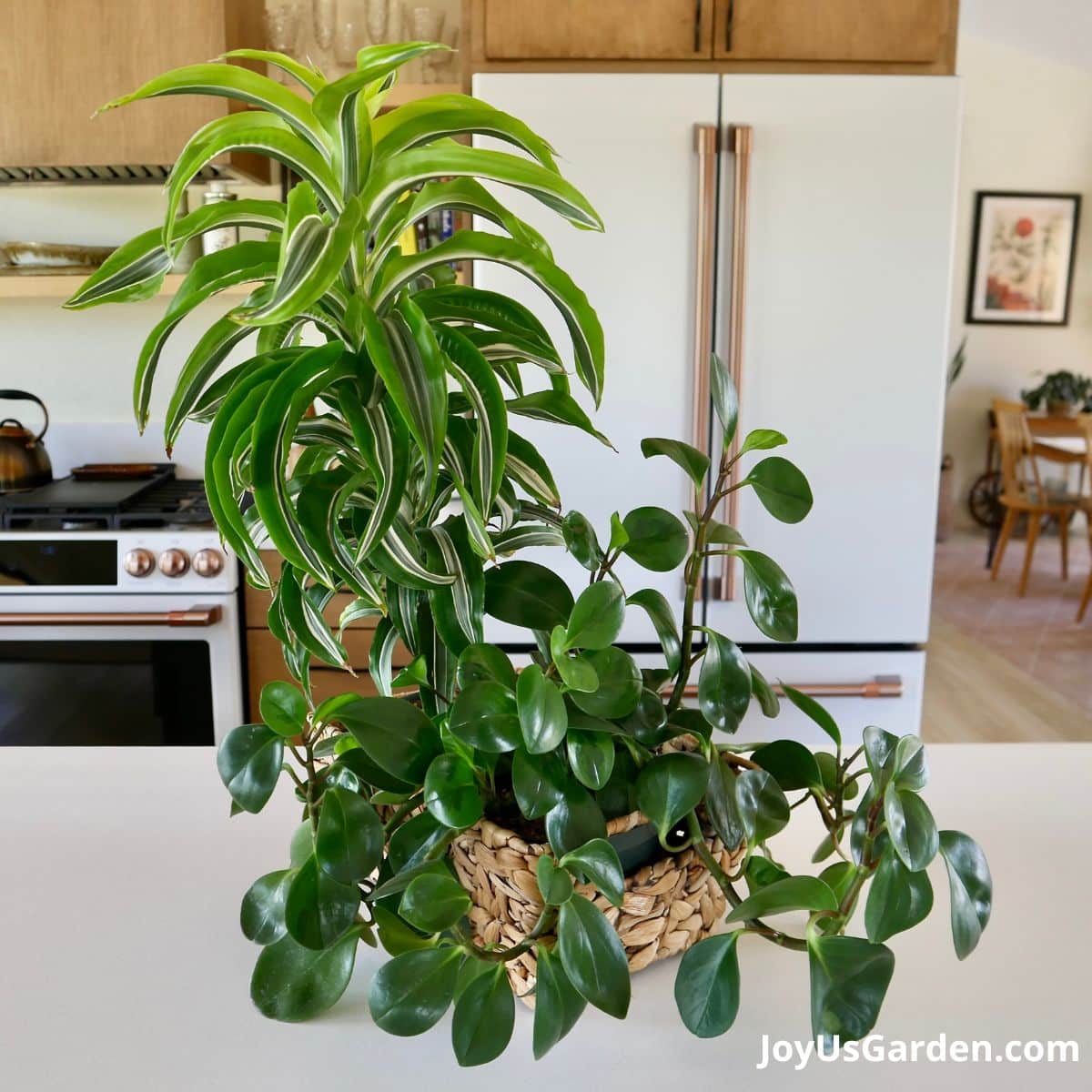
Uses
This is used as a tabletop plant, in dish gardens, and terrariums. It’s also well suited to use in a houseplant living wall.
Size
As a houseplant, the average size is 12″ x 12″. It’s commonly sold in 4″ or 6″ grow pots. In my experience, it gets much wider. The mother plant growing in the white pot (in the lead photo and below) has been pruned and propagated two times.
This plant meanders and trails as it grows. Right now, it’s 20″ wide and 17″ tall. My Variegated Baby Rubber Plant (which is younger) grows in a more upright form.
You can always prune your Baby Rubber Plant to keep it more compact and upright.
Growth Rate
The Baby Rubber Plant grows moderately to fast in bright indirect light. The growth rate will be slower if the light conditions are lower than it prefers.
Big Draw
Even though this plant flowers (more on that towards the end), the deep green, glossy foliage and ease of care are its allure. There is also a Variegated Baby Rubber Plant if that’s more to your liking.
Peperomia Obtusifolia Care
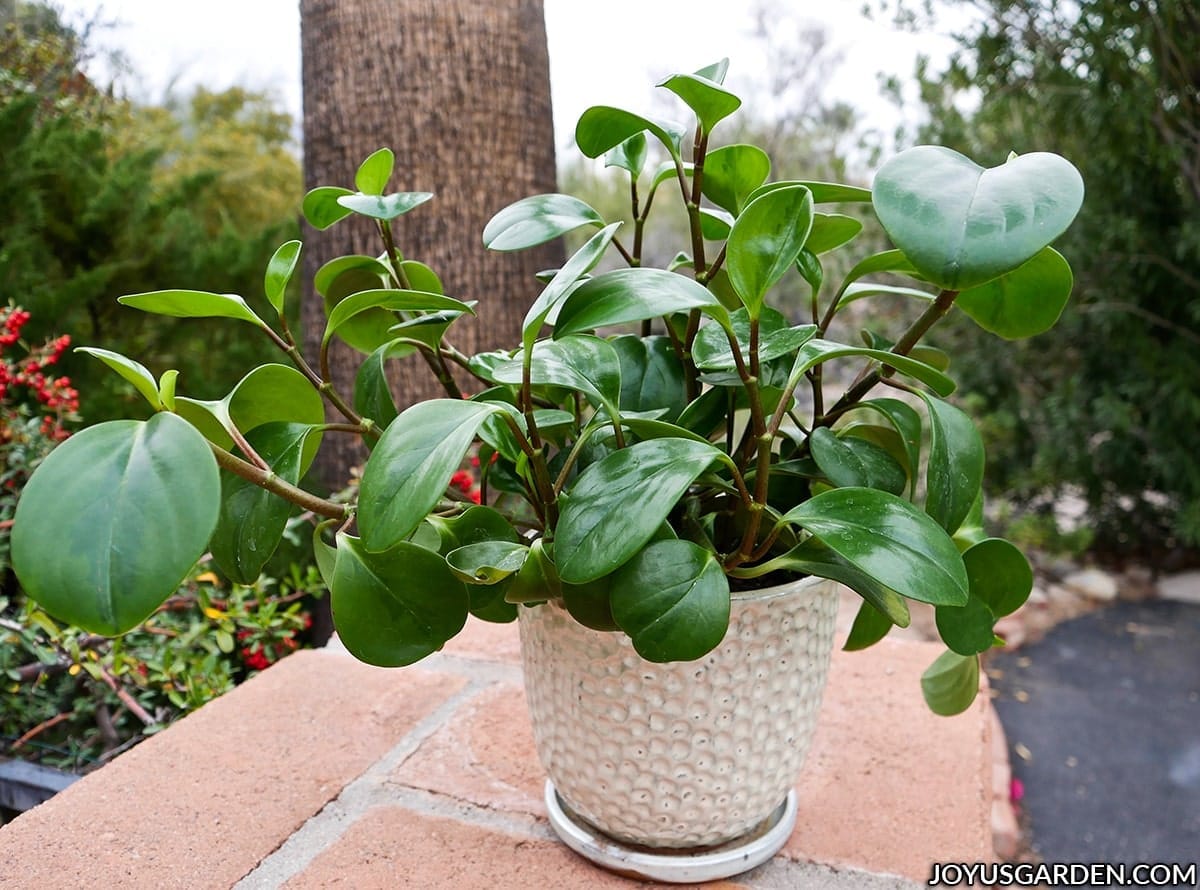
There are numerous variegated forms of the Peperomia obtusifolia. If you have one of them, know the care points in this post apply to all. One difference: they need a bit more light to bring out and keep the beautiful variegation.
Peperomia Obtusifolia Light Requirements
The Peperomia obtusifolia is no different than many other houseplants. It prefers and does best in bright natural light – moderate or medium exposure. One of mine grows in my kitchen, 4′ away from a large northwest-facing window, and the other in the bathroom across from a large east-facing window.
Keep yours out of hot, direct sunlight, as those thick, fleshy leaves will burn.
I’ve never grown it in lower light, but I imagine it would tolerate lower to moderate conditions. You may not see much growth, though, if the light levels are too low.
The variegated varieties of this plant need a bit more light.
Peperomia Obtusifolia Watering
Peperomia obtusifolias are succulent-like; they store water in their thick fleshy leaves, stems, and roots. You don’t want to overwater this epiphytic plant because it’ll succumb to root rot.
I let mine go dry before watering again. In the summer, it’s once every 7-10 days, and in winter, every 14-18 days. I always tell you how often I water my specific houseplants so you have a guideline and can adjust the frequency to your conditions.
Your Baby Rubber Plant might need watering less or more often. Many variables come into play, like the pot size, the type of soil it’s planted in, its growing location, and your home’s environment. The more light and warmth, the more often yours will need watering.
Here’s a Guide to Watering Indoor Plants. This will help you in determining factors as to how often you water yours.
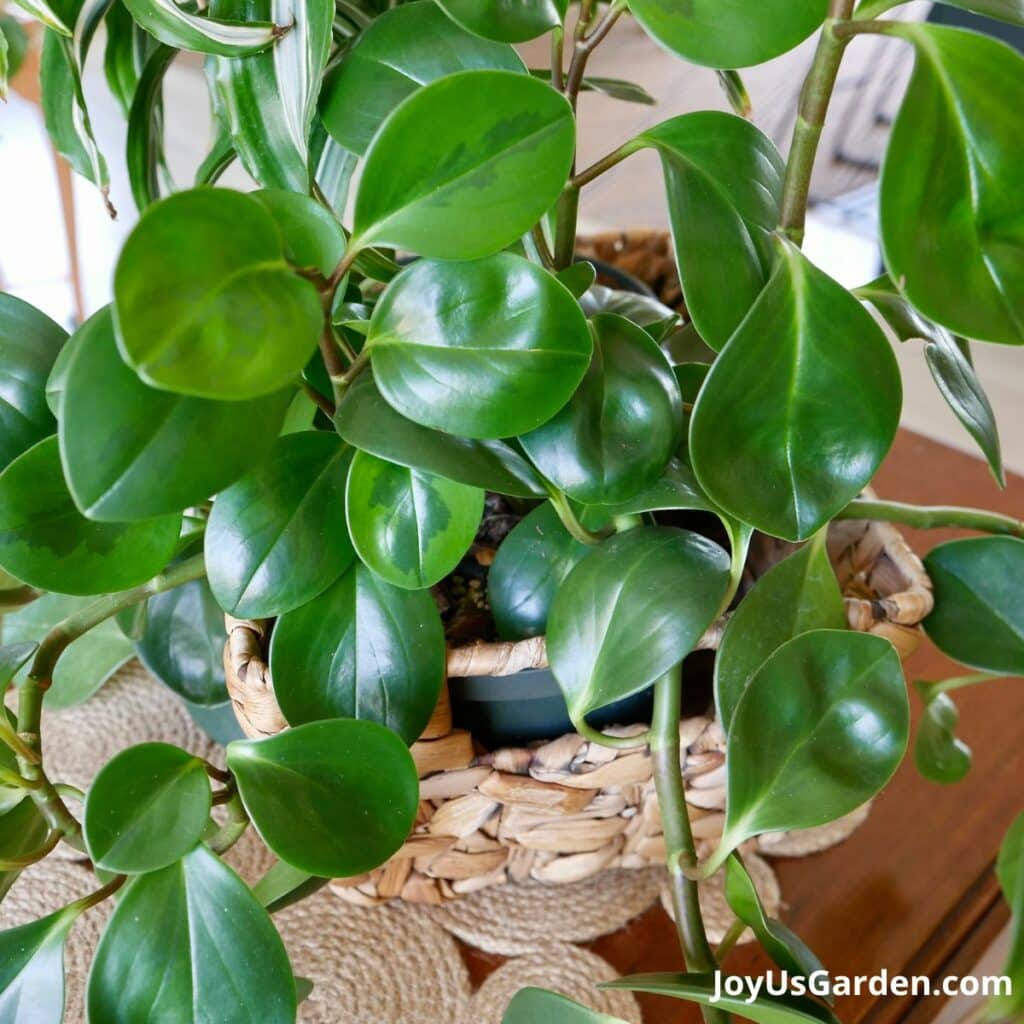
Temperature
The average indoor temperature is fine. If your home’s comfortable, it’ll also be so for your houseplants. Keep your peperomias away from cold drafts and air conditioning or heating vents.
Humidity
In their native habitat, Peperomia obtusifolias grow in humid environments. One of the places it’s native to is southern Florida. It thrives in high humidity and loves it.
The good news is I live in a desert climate, and mine are doing fine after five-plus years. I mist the foliage now and then. I like this mister because it’s small, easy to hold, and puts out a nice amount of spray. I’ve had it for over four years, and it’s still going strong. I also put my plants out in the rain two or three times a year for extra moisture and to clean the foliage off.
Because they’re epiphytic in nature and their small root systems, they also collect water through their leaves. You could mist your Peperomia a couple of times a week if your home’s dry, and you think it needs it. Another option would be to fill a saucer with small rocks and water and then set the plant on top of that. The rock keeps the roots from submerging in the water.
I have this humidity meter in my dining room. It’s inexpensive but does the trick and still works fine after a few years. I run my humidifiers when the humidity reads low, often in the Arizona desert!
Do you have a lot of tropical plants? We have a whole guide on Plant Humidity that might interest you.
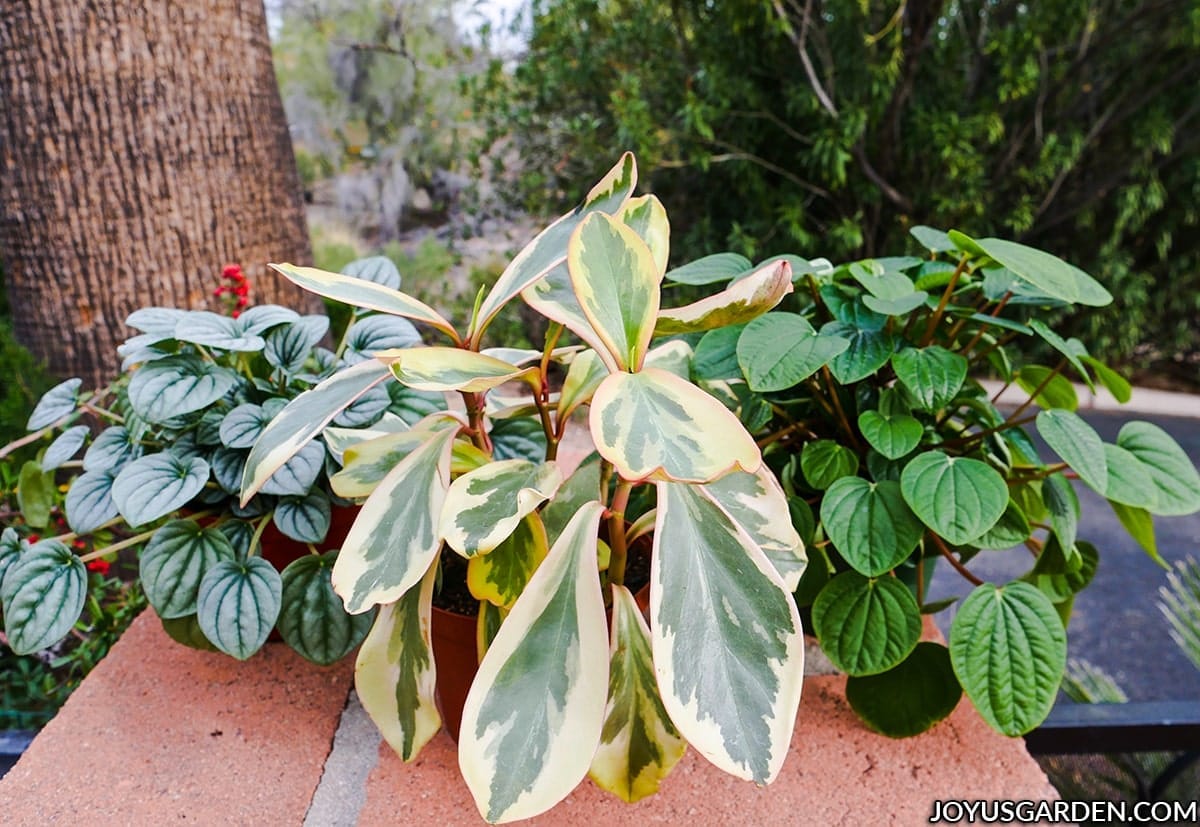
Feeding / Fertilizer
We have a long growing season here in the Sonoran Desert from mid-February through October. I fertilize with Maxsea or Sea Grow, Grow Big, and Liquid Kelp seven times during the growing season. It’s how I feed all my tropical plants. I alternate using these granular and liquid fertilizers and don’t mix them.
Whatever houseplant food you choose, don’t over-fertilize your peperomias because salts build up and can burn the plant’s roots. This will show up as brown spots on the leaves.
You want to avoid fertilizing any stressed houseplant, i.e., bone dry or soaking wet. I don’t fertilize houseplants in late fall or winter because it’s not their active growing season.
Peperomia Obtusifolia Soil / Repotting
Check the post and video highlighted below that focuses on the best time to repot, the steps to take, and the soil mix. In a nutshell, Baby Rubber Plants like a soil mix rich in organic matter, chunky, and well-draining.
Their root systems are small, so they don’t need repotting often. I repot mine every four to six years to freshen the soil mix or if the roots are coming out the bottom. For example, I only increase one pot size from 4″ to 6″ or 6″ to 8″.
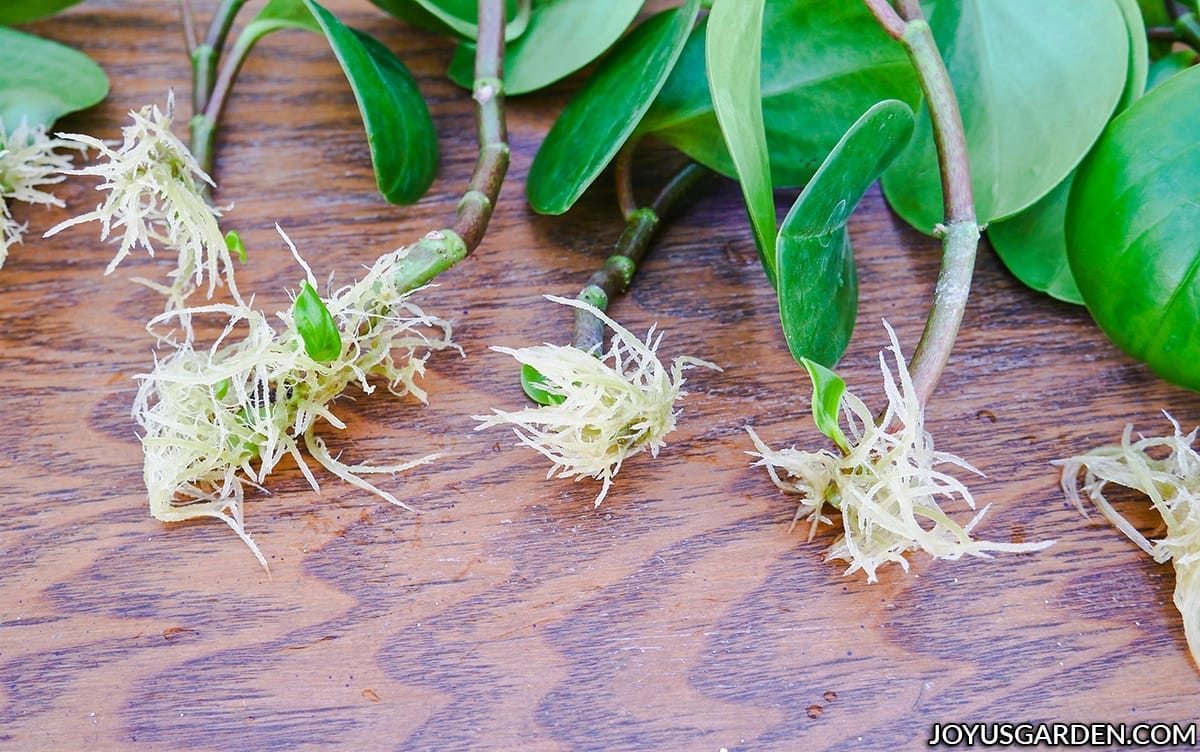
You’ll want to check out this Peperomia Repotting Guide for all the details.
Pruning
Not much is needed regularly. I have to trim an occasional spent leaf off.
The Baby Rubber Plant grows fast. You may have to prune yours to control the size and form. These plants are easy to propagate from stem cuttings, so that’s another reason for pruning.
Check out how I Pruned & Propagated My Baby Rubber Plant.
Peperomia Obtusifolia Propagation
It’s easy to get a new plant or two. Peperomia obtusifolias propagate by stem cuttings (it is very easy to do in water), by taking leaf cuttings, and/or by dividing the plant.
Propagating, like repotting, is best done in spring, summer, and early fall.
You can see how I Planted My Baby Rubber Plant Cuttings here.
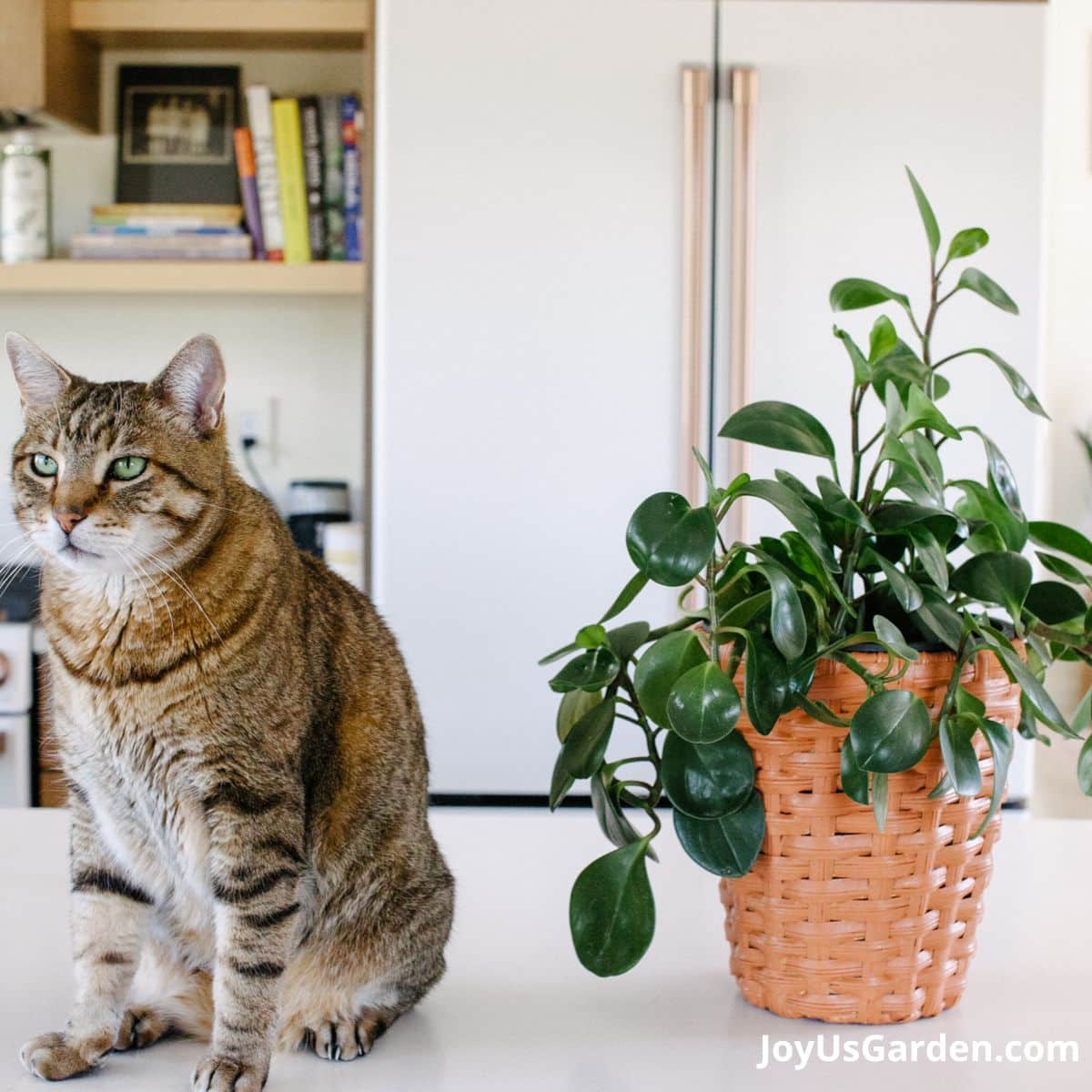
Pests
My Peperomias have never gotten any. Maybe that’s because I regularly spray the foliage and stems with water in my kitchen sink. They can be susceptible to mealybugs, spider mites, and scale.
As with any pests, keep your eye out for them and take control immediately. They spread from houseplant to houseplant very quickly.
Pet Safety
Hip hip hurrays, the Peperomia obtusifolia is a plant that the ASPCA lists as non-toxic for cats and dogs.
My two kitties don’t pay much, if any, attention to my many houseplants. If your furry friends like to munch on plants know that chewing on them could make them sick. But it’s not toxic.
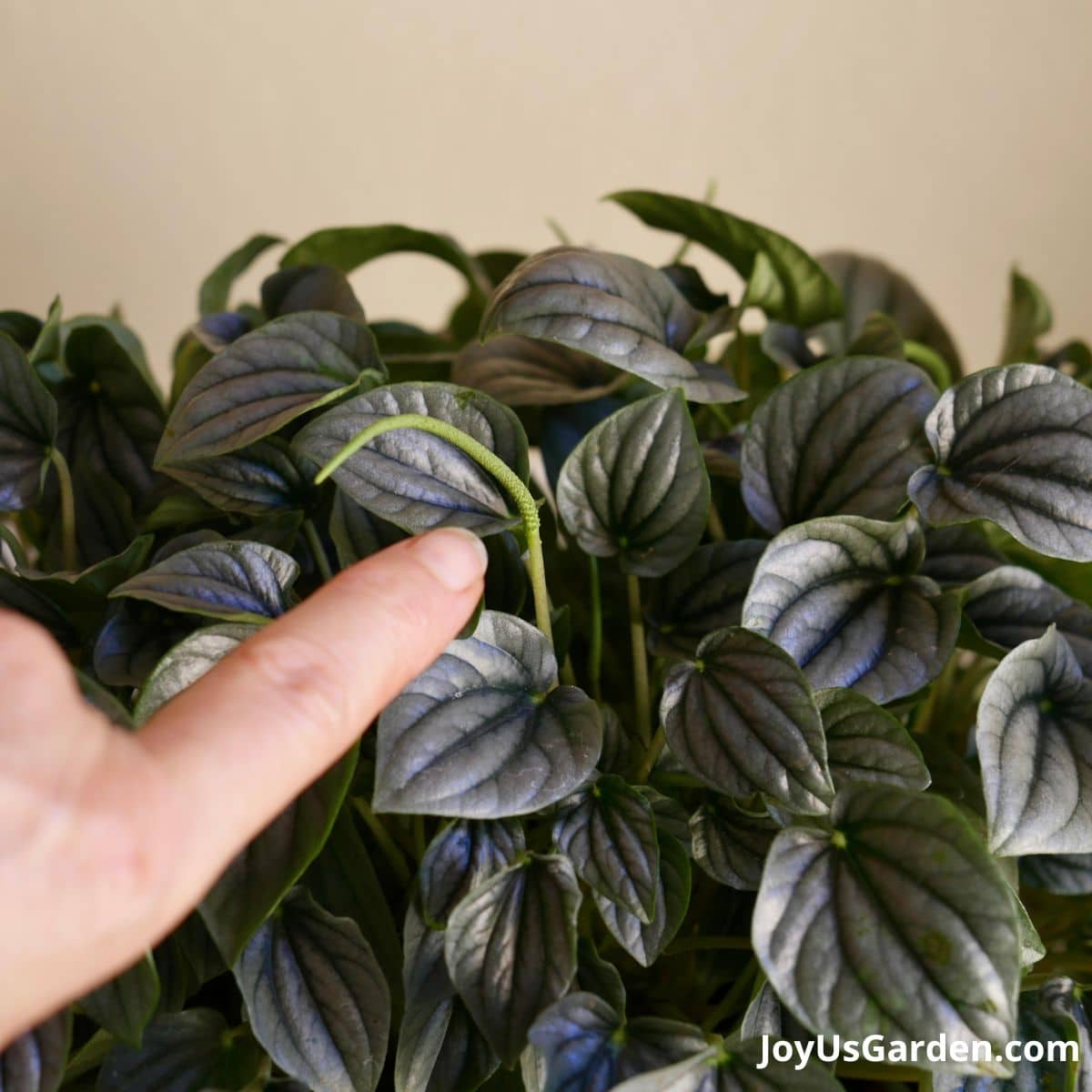
Peperomia Obtusifolia Flowers
They aren’t like other flowers, and you could mistake them for a new leaf emerging. All the flowers on mine have been greenish.
Some Of Our General Houseplant Guides For Your Reference: Guide To Watering Indoor Plants, Beginner’s Guide To Repotting Plants, How to Clean Houseplants, Winter Houseplant Care Guide, Plant Humidity: How I Increase Humidity For Houseplants, Buying Houseplants: 14 Tips For Indoor Gardening Newbies
Baby Rubber Plant Care Video Guide
Here are some other peperomias to add to your houseplant collection: Watermelon Peperomia, Ripple Peperomia, and Peperomia Hope.
Baby Rubber Plant FAQs
It sure is!
No. It’s commonly called a succulent-like plant, but it isn’t classified as a succulent. It might be easy to think that because it stores water in its leaves, stems, and roots, just like succulents do.
Yes, it can. I had a Peperomia Red Edge and a Variegated Peperomia obtusifolia growing in pots outdoors year-round in my Santa Barbara garden. They grew in pots in bright shade in a garden full of bromeliads and succulents.
Santa Barbara has mild winters (zone 10a and 10b), and I lived seven blocks from the beach, not in the hills where it got colder at night. I grow my Peperomias indoors here in Tucson because the winter evenings are colder, and the summers are much hotter.
You can put your Peperomia outside for the summer but make sure it doesn’t get any direct, hot sun. And take it back inside when the evenings dip into the 50s.
It depends on the Peperomia. Some stay shorter than others, and some trail.
My Peperomia obtusifolia in the white ceramic pot stands about 13″ tall. Some stems are starting to trail and grow outward and upward, creating an interesting look. My Variegated Peperomia obtusifolia which grows in a dish garden, is now over 16″ tall and is more upright.
Peperomia obtusifolias are the only Peperomias I’ve rooted in water. I had a batch of cuttings in water for almost six months. I’m not sure how long they’d grow in water for the long haul.
You sure can. Because peperomia plants are native to tropical climates, they’d love it. It’s best to avoid misting them at night to avoid fungal diseases.
No, they don’t. Their root systems are on the smaller side. A larger pot with more soil mass could lead to root rot.
I’ll talk about the Peperomia obtusifolia here. A few reasons could cause this, but the most likely would be a lack of water.
Conversely, don’t water it too often. If the stems are mushy, the cause would be too much water.
In conclusion:
This is a wonderful plant to start with if you’re a beginning houseplant gardener. Or, if you’re someone like me who has many other plants to maintain indoors and out, easy care Peperomia obtusifolias are the ticket.
They’re such an attractive plant and propagate in a snap. Just think of all the cuttings you’ll be able to share. The National Garden Bureau has declared 2023 the year of the peperomia. How fancy plants is that?!
This post was published on 1/25/2020. It was updated on 5/11/2023.
Happy gardening,


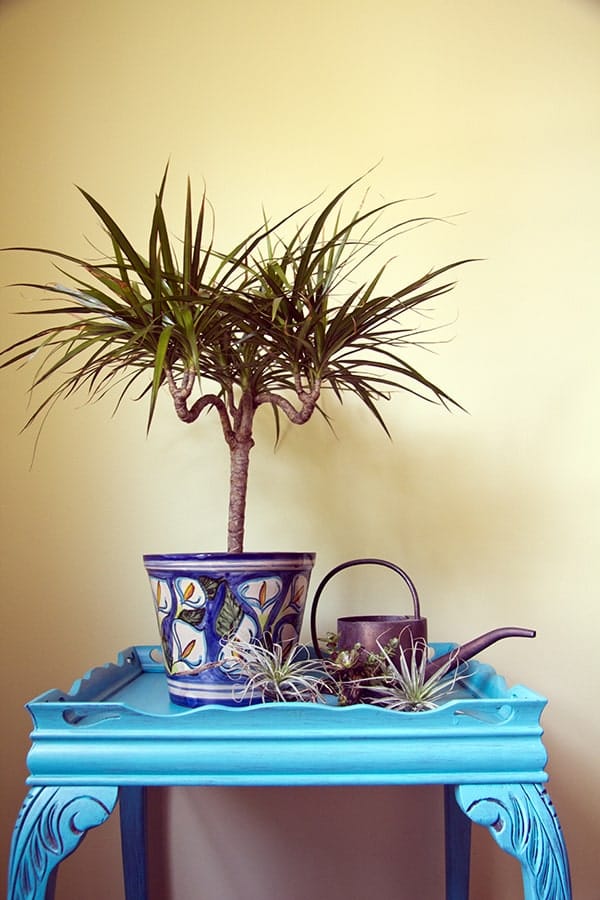
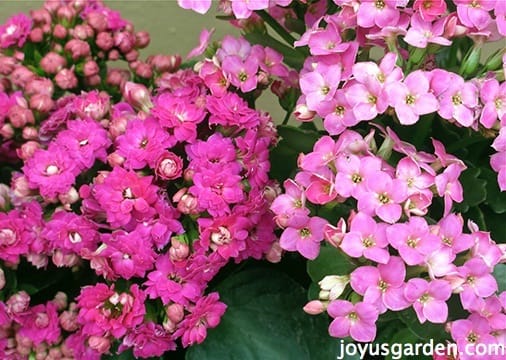
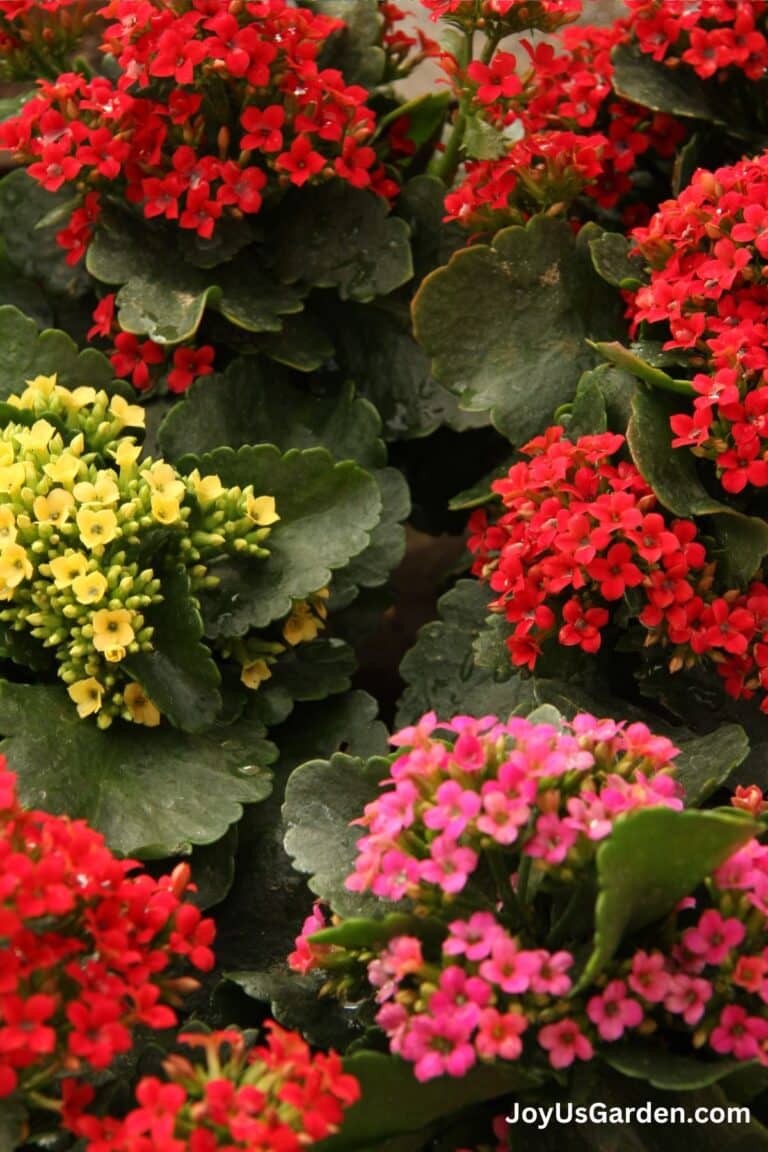
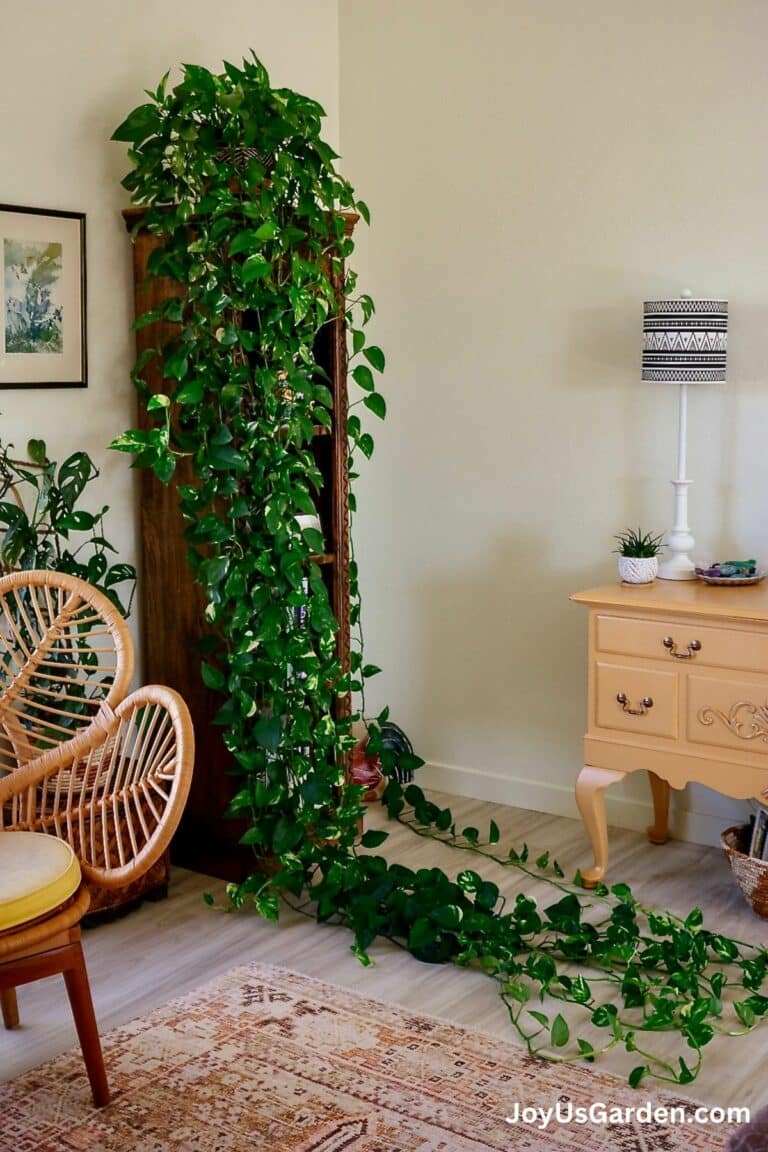

I’m from Bangalore, India. My baby rubber plants are growing very well in bright shade , with very little water, are about 1 foot tall, standing up like little Meerkats looking out !!
Your blog explains very well.?Keep writing.
Thank you, Geetha! I’ve moved my Baby Rubber Plant to a new spot where it has more room to spread. I love the shape it’s growing into. Nell